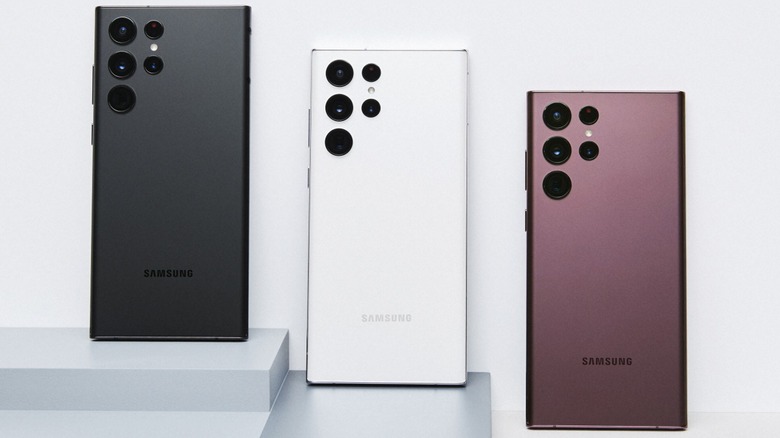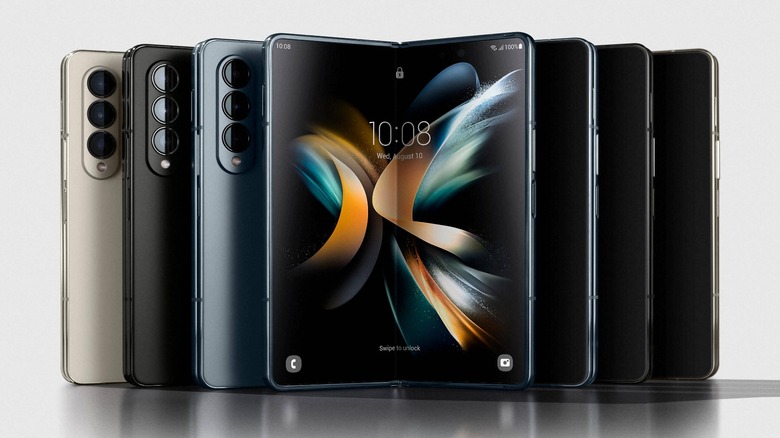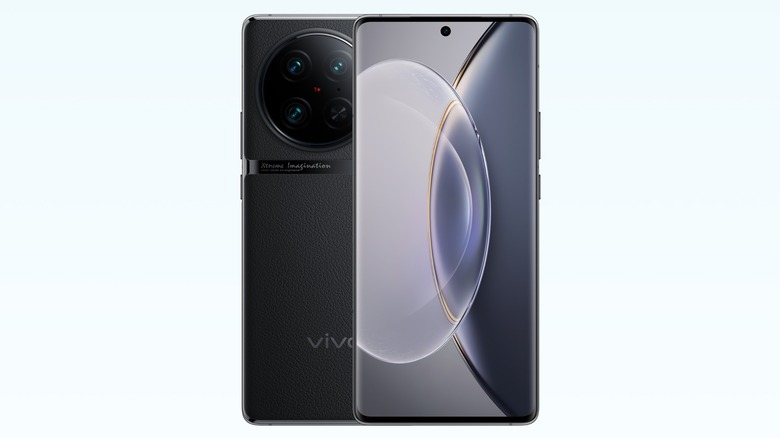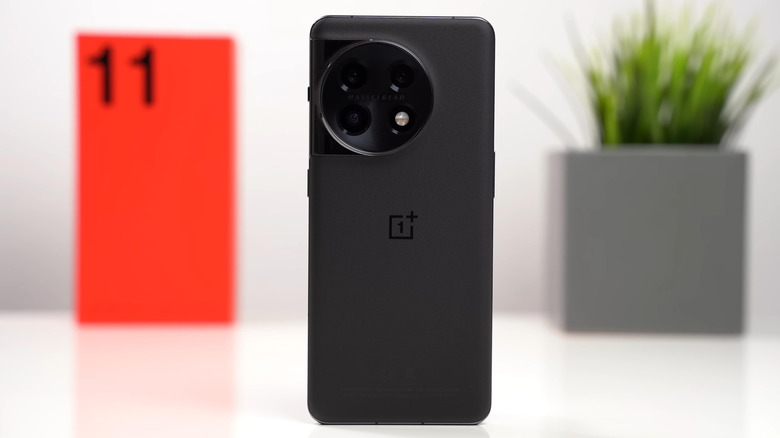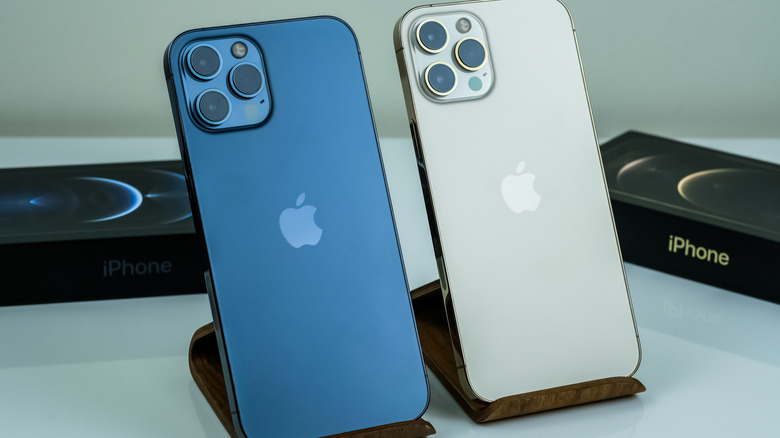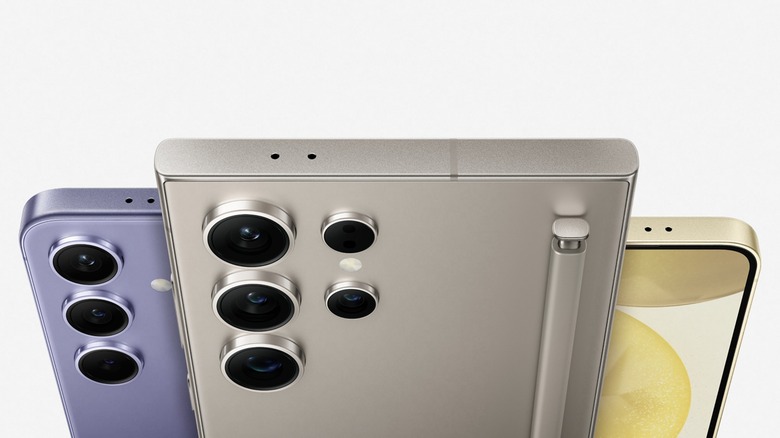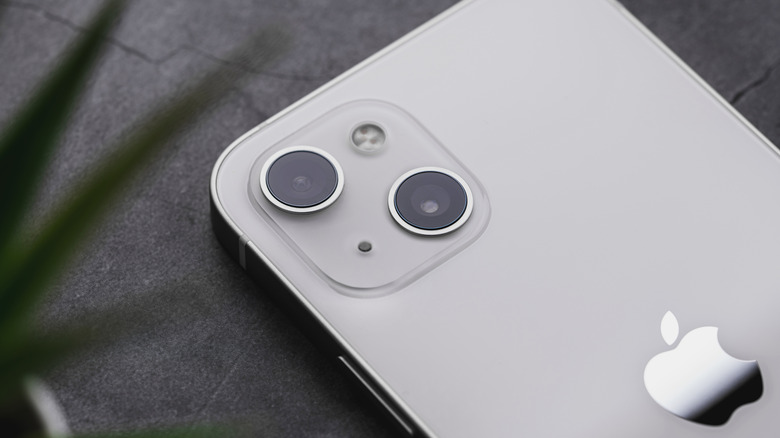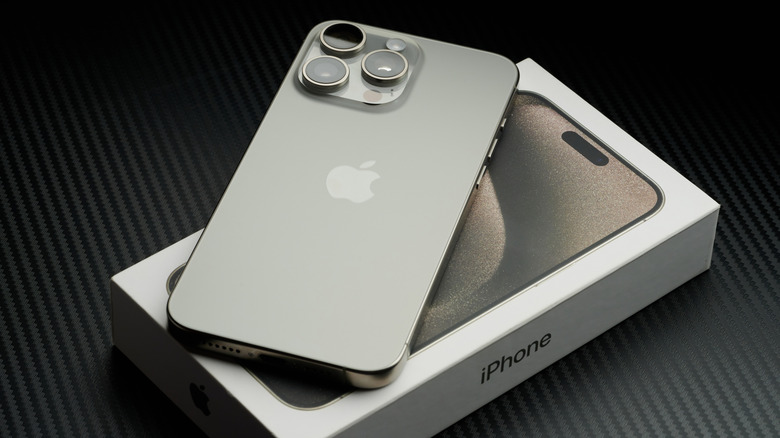The 15 Most Powerful Smartphone Processors (Ranked By Geekbench)
We may receive a commission on purchases made from links.
Smartphone processors have come a long way since Apple defined the modern smartphone with 2007's iPhone. A 412-MHz Arm 11 system-on-chip (SoC) was all it needed back then, but the increasing complexity of these devices — and our deepening dependence on them — means that modern smartphones now boast the sort of processing power that we could only dream of in 2007.
Multi-core, gigahertz-speed SoCs are now the norm, even in cheap Android smartphones. But despite the vast improvements across the board, one name still rules the roost: Apple. The company's smartphone SoCs have always had the upper hand in raw power, often two generations ahead of their non-Apple competition — which is to say that you'll see a lot of Apple SoCs on this list of the most powerful smartphone processors.
A quick reminder before we start: We're basing this list on single-core Geekbench scores and not real-world tests. The differences between these high-end processors may not be as pronounced outside of benchmarking scenarios, and some tasks, such as social media browsing, may feel broadly similar between all of them. So before you rush out and buy an iPhone 16 Pro because its processor tops this list, take a step back and think of how you use your phone and what you need from it. With that out of the way, let's get started.
15. Qualcomm Snapdragon 8 Gen 1
The Snapdragon 8 Gen 1 debuted a new naming convention for Qualcomm's chips, replacing the familiar triple-digit numbering with a name that was simultaneously simpler and more complex (especially with all the variations that Qualcomm would later introduce). Qualcomm first unveiled the Snapdragon 8 Gen 1 in 2021, bringing improvements such as 10-gigabit 5G connectivity, an 18-bit ISP for image processing, and an updated AI engine.
Unfortunately for Qualcomm, the Snapdragon 8 Gen 1 had some teething issues. The processor was infamous for running hot and suffering under extended testing. The end result was that Snapdragon 8 Gen 1-powered smartphones like the Samsung Galaxy S22 Ultra we reviewed back in 2022 weren't necessarily the massive leap over the Snapdragon 888 that Qualcomm — or smartphone enthusiasts — hoped for.
Case in point: the best Snapdragon 8 Gen 1 result in Geekbench's records is 1,580 points in single-core and 3,852 in multi-core — only a minor improvement over the Snapdragon 888's 1,510 and 3,859 points.
14. Qualcomm Snapdragon 8 Gen 1
Qualcomm has always had to play catch up to Apple, and nowhere is that more evident than with the Snapdragon 8 Gen 1 processors. Not only did the original Snapdragon 8 Gen 1 lag behind the A13 Bionic despite coming out two years after the Apple chip, but Qualcomm's first bite suffered from heat and throttling issues that hobbled its chances of being a genuine flagship CPU.
Things were bad enough that Qualcomm swapped manufacturers for its mid-cycle refresh, switching to TSMC for the Snapdragon 8+ Gen 1 and reaping the rewards with better performance, efficiency, and reduced heat output. The improvements helped push smartphones like the Samsung Galaxy Z Fold 4 that we reviewed ahead of their Snapdragon 8 Gen 1-powered predecessors.
Granted, Geekbench scores of 1,696 and 4,352 — in single- and multi-core tests, respectively — still weren't enough to pull ahead of Apple's two-year-old A13 Bionic, let alone 2022's A16 Bionic. But the 8+ was at least a marked improvement over the original Snapdragon 8 Gen 1.
13. Apple A13 Bionic
Android smartphone processors may have improved a lot over the years, but it's a sign of Apple's dominance that a five-year-old chip still manages to place in the top 15 fastest smartphone SoCs in Geekbench's database. The A13 Bionic debuted in 2019 in the iPhone 11, 11 Pro, and 11 Pro Max with a claimed 20% improvement in CPU and GPU performance over the A12 Bionic, along with better efficiency that allowed for all-day battery life.
Apple also improved its neural engine and introduced ML accelerators with the A13 Bionic, allowing for 1 trillion operations per second. Altogether, these improvements helped stretch Apple's lead over Qualcomm even further, especially considering that the Snapdragon 855 already trailed the previous A12 Bionic — a situation that we're seeing play out again with Apple's new chart-topping processors.
A 1,729-point single-core score and a 3,895-point multi-core score admittedly isn't all that outstanding now, but it's still within spitting distance of a couple of 2024 processors.
12. Qualcomm Snapdragon 8s Gen 3
The Qualcomm Snapdragon 8s Gen 3 — not to be confused with the Snapdragon 8 Gen 3 — is Qualcomm's entry into the affordable flagship market, offering a cut-down Snapdragon 8 Gen 3 experience at a suitably reduced price.
The 8s Gen 3 slots between the Snapdragon 8 Gen 2 and the Gen 3, combining the latter's CPU architecture with some of the former's technology, including the graphics hardware and memory controller. The Hexagon NPU and Sensing Hub are also more in line with the Gen 2's, although Qualcomm allegedly made some firmware updates to improve its capabilities. So this means enhanced AI features for 8s Gen 3-powered phones, but no global illumination in games, for example.
Qualcomm made some other cutbacks to get the 8s Gen 3 down to a price where it could feature in $400 phones like the Xiaomi Poco F6, but the main takeaway is that performance also takes a hit. The 8s Gen 3 scores 1,835 points in the single-core test and 4,651 in the multi-core test, so it won't set the world alight. But it's also not that much slower than Google's flagship processor, either.
11. Google Tensor G4
Google first threw its hat into the custom SoC ring in 2021, introducing the Google Tensor processor for the Pixel 6 and Pixel 6 Pro, before reusing it for the mid-range Pixel 6a the year after. Tensor was all about AI from the start, with Google focusing on ML capabilities such as speech recognition and camera enhancements — a focus it's maintained with the Tensor G4 from earlier this year.
Google debuted the Tensor G4 alongside the Pixel 9 phones, namely the high-end Pixel 9 Pro and Pro XL and the more affordable Pixel 9. None of these smartphones set the performance charts alight, admittedly, but the Gemini AI system that the Tensor G4 enables seems to have potential — potentially making up for the Tensor G4's lack of raw power.
This isn't to say that the Tensor G4 is slow, but 1,878 and 4,364 points in the single- and multi-core tests, respectively, isn't anything to shout about — especially not for a flagship processor from 2024.
10. MediaTek Dimensity 9200
The odd one out on this list, you may not be aware of the MediaTek Dimensity 9200 if you've only ever shopped for an Apple, Samsung, or Google smartphone. MediaTek has mostly focused on the affordable flagship segment with processor families like the Dimensity 8000 series, but the Dimensity 9200 shows that it can compete with the best. Well, just about.
Like Qualcomm's flagship processors, the Dimensity 9200 is an octa-core CPU with a ray tracing-capable GPU and an AI-accelerating NPU alongside it, making for a thoroughly modern smartphone chip. And, despite not having the same brand recognition as Samsung or Qualcomm, Dimensity 9200-powered smartphones like the Vivo X90 Pro we reviewed are solid offerings with more than adequate performance.
The Geekbench numbers back that up, too, with the chipset managing a 1,883 single-core score and 4,955 in the multi-core test. Nothing earth-shattering, but decent enough — if you can get your hands on one of the phones it's in, of course.
9. Qualcomm Snapdragon 8 Gen 2
Qualcomm's previous flagship mobile processor is one of the better-represented ones amongst our top 15, with a variety of phones from Samsung, Vivo, Xiaomi, and OnePlus all using this octa-core CPU. The Snapdragon 8 Gen 2 pushed even further into AI realms, with an upgraded Hexagon NPU that improved AI performance and efficiency.
Other upgrades included a new image signal processing (ISP) in the form of Cognitive ISP, one of the many AI enhancements the chipset would bring to flagship Android smartphones. Gamers were also treated to hardware ray tracing support, new for this generation of Snapdragon SoC. The company also improved its CPU and GPU cores' raw performance, of course.
The result was 1,939 points in Geekbench's single-core test and 5,341 in the multi-core test. Not too bad in the grand scheme of things — enough to maintain a place in our top 10 — but still a ways behind its successor on both fronts.
8. Samsung Exynos 2400
Apple isn't the only smartphone company building its own processors, although it's admittedly well ahead of its rivals in the performance stakes. Leading the charge for in-house Android smartphone processors is Samsung with the Exynos 2400, the newest iteration of its long-lived family of Exynos smartphone chips.
If the Exynos name doesn't ring a bell, it's likely because you're in North America. Samsung uses Snapdragon chips in its Samsung Galaxy S24 and S24+ in Canada, the U.S., and China, but opts for its own Exynos processors in other regions such as Europe and Southeast Asia. The company's Exynos chips had a bad reputation in the past, but the newer Exynos chipsets seem to have ironed out the major issues and acquitted themselves well in most tests.
That said, the Exynos 2400 still isn't quite on par with the latest Snapdragon processor, as the Geekbench results show. 2,059 points in the single-core test and 6,253 points in multi-core isn't bad at all, mind you, but you're still giving up some performance compared to Qualcomm's best.
7. Apple A14 Bionic
Apple's A14 Bionic powered the iPhone 12 family of phones, ranging from the base iPhone 12 up to the iPhone 12 Pro Max, with no on-paper differences between the CPU or GPU cores in any of the models. The big highlight of the A14 Bionic was the upgraded neural engine, which packed 16 cores vs. the A13 Bionic's eight cores.
The result was a claimed 80% increase in ML performance, all while performing an alleged 50% better than the competition. Given that Qualcomm's rival flagship of the time, the Snapdragon 865, is nowhere to be found in the top 15 as of 2024, we'd probably err on the side of agreeing with Apple's performance claims here.
As for the raw Geekbench numbers, the A14 Bionic scored 2,120 in the single-core and 4,956 in the multi-core tests. Roundly beaten by Qualcomm's latest SoC in the latter, then, but only a hair slower in the all-important single-core tests — all while being a good few years older, too.
6. Qualcommm Snapdragon 8 Gen 3
The Snapdragon 8 Gen 3 is Qualcomm's most powerful SoC (at least, until the Snapdragon 8 Elite hits the market), boasting an octa-core CPU — one prime, five performance, and two efficiency cores — with its latest Adreno GPU and an updated version of the Hexagon neural processing unit (NPU) it introduced with the Snapdragon 8 Gen 2.
The company claimed a 30% CPU performance improvement over the Gen 2 with improved power efficiency. Graphics got a bump in performance, too, with 25% better performance and power efficiency. It wasn't just marketing talk, either, as independent testing showed significant improvements over the Gen 2. But the big news was the AI features, with Qualcomm claiming 98% better performance than the Gen 2 and the ability to run 20 tokens per second.
Qualcomm's latest and greatest features in a handful of high-end smartphones, most notably the Samsung Galaxy S24 Ultra that SlashGear editor Chris Davies reviewed (and liked). As far as Geekbench goes, the Snapdragon 8 Gen 3 posts its best single-core score — 2,138 points — in the Samsung, while its 6,777-point multi-core high score comes in the Asus Zenfone 11 Ultra.
5. Apple A15 Bionic
Apple's years-long domination of the Geekbench charts continued with 2021's A15 Bionic chip, which powered the company's iPhone 13 family of phones. Like its successors and predecessors — the A15 Bionic paired six cores — two high-performance cores and four efficient cores — with a powerful GPU. However, unlike later models, the A15 Bionic name encompassed both four- and five-core GPU variations.
The iPhone 13 and 13 Mini got the four-core GPU version of the A15 Bionic, while the iPhone 13 and 13 Pro Max came with a five-core GPU. The now-standard 16-core neural engine was also present, with the whole package built on a 5nm process that allowed Apple's chip designers to squeeze 15 billion transistors and a lot more cache than the previous SoC.
As you might expect given its age, the A15 Bionic trails Apple's latest processors in the Geekbench charts, with only 2,333 and 5,725 points in the single- and multi-core tests respectively in an iPhone 13 Pro Max.
4. Apple A16 Bionic
Unlike later Apple SoCs, the A16 Bionic straddled two generations of iPhone, with its six-core CPU and five-core GPU debuting initially for the iPhone 14 Pro and Pro Max before Apple repurposed it as the entry-level chip for the iPhone 15 and 15 Plus — and doing a good job in the process, as our own Chris Davies found out when he reviewed the iPhone 15.
Apple claimed the A16 Bionic was "generations ahead of the competition," touting 40% faster performance than its rivals. It's hard to disagree with the former claim: we've not seen a Qualcomm SoC on this list yet, and it's probably going to be a few more years before we see one of its processors eclipse this two-year-old (as of 2024) part.
The best A16 Bionic score in Geekbench's database is 2,598 for single-core and 6,677 for multi-core, both in the iPhone 14 Pro. As with the A17 Pro, scores differ ever so slightly between the different A16 Bionic-equipped smartphones, with the iPhone 15 bringing up the rear with 2,535 and 6,299 points in the single- and multi-core benchmarks, respectively.
3. Apple A17 Pro
Third on our list, probably unsurprisingly, is Apple's previous flagship smartphone processor, the Apple A17 Pro. The A17 Pro powered the highly-regarded iPhone 15 Pro and iPhone 15 Pro Max, introducing what Apple called "a new generation of Apple Silicon." The company didn't quite explain what this new generation entailed, although the A17 Pro did boast notable improvements over the A16 Bionic regardless.
These included 10% better CPU performance, a faster neural engine, a 20% faster six-core GPU — with hardware-accelerated ray tracing — and a dedicated AV1 decoder. But the A17 Pro wasn't just a powerful chip: it was also the first mass-market processor built on the 3nm process (courtesy of TSMC). This die shrink from the A16 Bionic's 4nm process is likely what allowed for the A17 Pro's performance and efficiency improvements.
Geekbench shows the A17 Pro scoring 2,889 points in the single-core test and 7,170 in the multi-core test, both in an iPhone 15 Pro. For whatever reason, the 15 Pro Max's scores are slightly lower — 2880 and 7136 points, respectively — although the differences are small enough to be within margin of error.
2. Apple A18
The Apple A18 launched alongside the A18 Pro as the SoC in the basic Apple iPhone 16 and iPhone 16 Plus. Like the A18 Pro, the A18 has a six-core CPU, this time complemented by a 16-core neural engine — sans the ML accelerators in the Pro — and a five-core GPU.
Apple claimed a range of performance improvements over the A16 Bionic it replaced: twice the ML capabilities, a 30% faster CPU, and a 45% faster — and 30% more efficient — GPU. Like the A18 Pro's GPU, the A18's graphics unit also supports hardware ray tracing, a feature Apple introduced with the A17 Pro.
As far as raw Geekbnech results go, the A18 isn't too far behind its bigger brother, a similarity that extends to the iPhone 16 more broadly. The lower-end — only relatively, of course — processor posts a 3,265-point single-core score and an 8,014-point multi-core score, both tested with an iPhone 16 Plus. That's better than the Apple M2 in the 13-inch iPad Air, which is no mean feat.
1. Apple A18 Pro
We called it in the intro: The A18 Pro is Apple's latest and greatest mobile processor as of the end of 2024, powering the Apple iPhone 16 Pro — which we reviewed — and iPhone 16 Pro Max. The six-core SoC — with six-core GPU — launched as the successor to the A17 Pro chip that powered the higher-end iPhone 15 models, with Apple claiming a 15% performance improvement over the old SoC, along with a 20% improvement in power efficiency at the same performance level.
Apple also claimed that it built its new SoCs specifically for Apple Intelligence, with the A18 Pro's next-gen machine learning (ML) accelerators boosting AI efficiency and being fully optimized for features such as email summaries and call transcriptions. But we'll leave the AI discussion for another time and focus on the A18 Pro's Geekbench performance, which, as you might expect, tops the table as far as smartphones go.
The A18 Pro scores 3,402 points in Geekbench's single-core test and 8,401 points in the multi-core test. That's still a way behind the M-series processors in Apple's tablets and laptops (the M4 scores a crazy 13,671 in the multi-core test), but a massive improvement over the A17 Pro that preceded it, and notably higher than everything else on this list.

